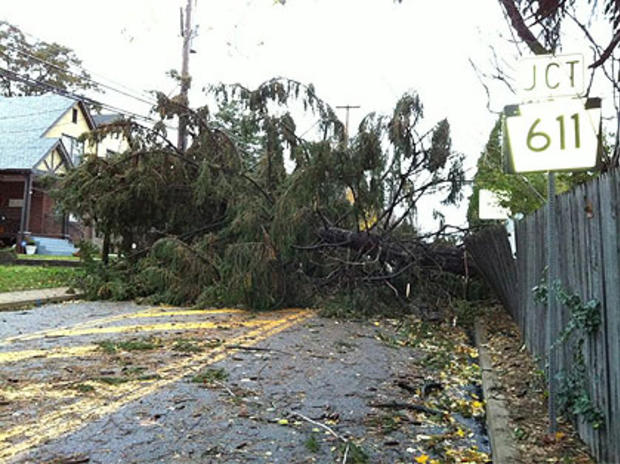Part 2: Playing Catch-Up After Each Big Storm
KYW Regional Affairs Council
"Stormproofing the
Delaware Valley"
.
By John McDevitt
PHILADELPHIA (CBS) -- Utility companies work year round to prepare for major storms. Technological advancements and "green" methods are being studied and utilized in many service areas.
But, when a storm hits, governments and utility companies often find that their preparations were insufficient.
"All these trees went down at one time," notes a tree service worker after Hurricane Sandy. "Those two there, that one, this big one, and there was another one up the block."
Tree trunks and limbs falling onto electrical lines can cause power outages for days or even weeks as crews work through a backlog of tree removals and line restorations after a widespread storm.
Some town have their power lines underground, but there are pros and cons to that approach.
----
"Not all areas can support underground cable," notes Peco spokeswoman Liz Williamson. "Also, underground cable is not as easily accessible -- it's not as easily repaired and replaced as an overhead line. Also, it's generally more difficult to detect an issue on an underground cable versus an overhead line," she adds.
Still, Williamson (right) says, vegetation clearing programs continue year round, along the approximately 3,000 miles of wires in its service territory -- at the cost of about $30 million a year.
At the same time, non-electrified "defensive" cables are being rolled out in heavily wooded areas. They are installed above the main wires, acting as a barrier between a falling tree branch and the power line.
Joanne Dahme, with the Philadelphia Water Department, says that prior to a predicted intense rainstorm, crews are out clearing debris from storm inlets. But it's not always enough.
"We might have things like basement backups that occur," Dahme (right) tells KYW Newsradio. "The (runoff) system is kind of looking for a way to relieve itself."
For residents in certain flood-prone areas whose basements have flooded in the past, free basement "backup valves" are installed as a preventive measure.
"Green" efforts are also underway throughout the Delaware Valley to aid in storm water management.
"Infiltration trenches, green roofs, and bump-outs -- they are trenches along the street where your curb would usually be, and you put both plants and gravel storage systems in there," explains hydrogeologist Dr. Laura Toran of Temple University (right).
Starting next month she will be overseeing the research and monitoring for Temple's campuswide project, part of a partnership with the Philadelphia Water Department's "Green City, Clean Waters" program.
And Aqua America, the suburban water company, says it spends more than $260 million on capital infrastructure improvements per year. The company credits the upgrades for the smooth running of systems during Hurricane Sandy.
---
Listen to Part 2...
.







